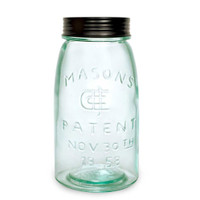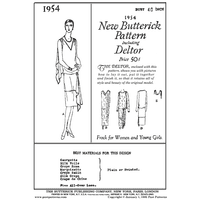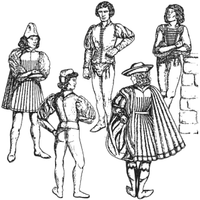 Loading... Please wait...
Loading... Please wait...Categories
Add to Wish List
New Products
- Home
- Historic Patterns
- By Era
- Renaissance & Elizabethan
- Men's
- Men's Italian Renaissance Garments
Product Description
c. 1420-1500 A.D.
Contains patterns for 3 shirts, 3 hose, 2 codpieces, a tabard and a cioppa or gown (sizes 36-48 included). This garments are complimented by MM026, MM092, MM093, MM101 and MM102.
The Renaissance of the 15th and 16th centuries began in politically splintered Italy. The age was humanistic, like the people themselves; the clothing was individualistic, competitive, even playful. While there were broad similarities, regional variations were the norm.
Men's fashions began to evolve around 1420. The cotehardie (MM023) became the doublet, first cut with a waist seam, then rapidly shortening to waist length. Sleeves were often tied or laced on, and a sleeveless underdoublet was sometimes worn as well. This was worn over a shirt. The houpelande (MM026) became a robe or gown opening down the front, worn open or shut, and often belted. A tabard could be worn instead of the robe, and young men often wore the doublet alone. Separate hose leggings, tied to the doublet or underdoublet, became joined at the back, and modest codpieces were worn to cover the opening in front.










